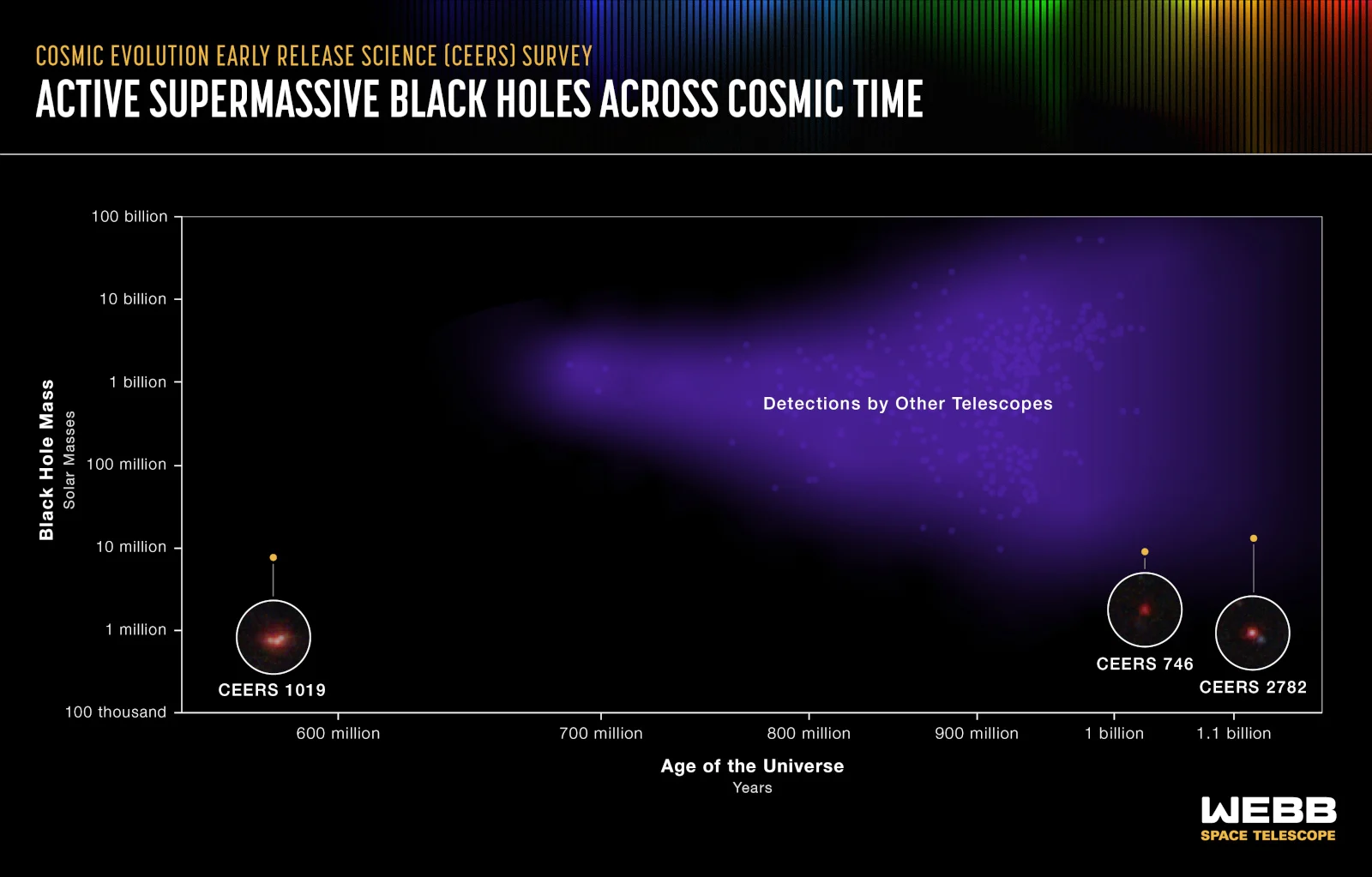The James Webb house telescope has given scientists the functionality to find celestial objects they would not have been capable of in any other case, equivalent to historic galaxies that theoretically should not exist. Now, as a part of the Cosmic Evolution Early Release Science (CEERS) Survey, researchers have found the most distant active supermassive black hole we have seen thus far.
Thanks to the near- and mid-infrared pictures James Webb has taken, researchers had been capable of finding a supermassive black hole in the galaxy they’ve dubbed CEERS 1019. They had been additionally capable of decide that the black hole has existed merely 570 million years after the Big Bang and that it is round 9 million photo voltaic plenty. In addition, the knowledge supplied by the telescope allowed them to come back to the conclusion that the black hole is consuming up numerous fuel and churning out new stars. “A galaxy merger could be partly responsible for fueling the activity in this galaxy’s black hole, and that could also lead to increased star formation,” CEERS workforce member Jeyhan Kartaltepe of the Rochester Institute of Technology in New York defined. In the picture beneath, you may see CEERS 1019 showing as three shiny clumps.

NASA, ESA, CSA, Leah Hustak (STScI)
At 9 million photo voltaic plenty, this black hole is far smaller than different active supermassive black holes beforehand found. Those celestial objects usually comprise greater than 1 billion instances the mass of the solar, which makes them a lot brighter and simpler to detect. The CEERS 1019 black hole is extra much like the one in the heart of our galaxy, which is round 4.6 million instances the mass of the solar. NASA mentioned scientists have lengthy identified that smaller black holes should have existed earlier in the universe, nevertheless it wasn’t till James Webb grew to become operational that they had been capable of affirm their presence.
In reality, the CEERS Survey workforce additionally discovered two different historic however small black holes by their knowledge. The CEERS 746 black hole existed 1 billion years after the Big Bang, whereas the CEERS 2782 black hole has been round since 1.1 billion years after the occasion. When seen by different devices, these black holes seem as peculiar star-forming galaxies. Astronomers are additionally reviewing different extra distant black holes discovered utilizing James Webb’s knowledge at the second, so CEERS 1019 would possibly lose the document sooner quite than later.
CEERS workforce lead Steven Finkelstein from the University of Texas at Austin mentioned: “Until now, research about objects in the early universe was largely theoretical. With Webb, not only can we see black holes and galaxies at extreme distances, we can now start to accurately measure them. That’s the tremendous power of this telescope.”
Scientists nonetheless discover it troublesome to elucidate how this black hole shaped so quickly after the universe started. But in the future, Webb’s knowledge may give them the data they want to have the ability to determine how early black holes are shaped.
…. to be continued
Read the Original Article
Copyright for syndicated content material belongs to the linked Source : Engadget – https://www.engadget.com/james-webb-telescope-captures-the-most-distant-active-supermassive-black-hole-yet-150244921.html?src=rss
